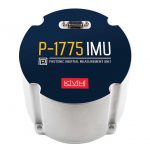The market for GNSS correction systems continues to grow as users learn how they can improve the accuracy and reliability of networks used across a range of industries.
“There is far more knowledge than there was even two years ago in the marketplace, as downstream user communities learn more about the benefits derived from correction services,” said Ian Stilgoe, vice president for emerging business for Topcon Positioning Group.
But at the same time, key segments of the market still believe that relying on a local network is sufficient because they don’t understand the negatives associated with it. “There are plenty of advantages to switch to a network, and it’s a constant process of education and understanding and making it available in areas where it doesn’t exist today,” Stilgoe said.
Expanding access to its networks across the globe is one of Topcon’s core objectives. The company, for example, recently added the Czech Republic, Switzerland, and Iceland to its platform. Today, Topcon has 4,700 network stations across Europe.
Topcon’s expansive base of users is one of the key advantages that businesses should consider when choosing a service for providing a real-time GNSS network correction service in today’s Internet of Things (IoT)-enabled world.
“There are a lot of things to consider in choosing services because there are a lot of new companies in this market,” Stilgoe said. “Users want high precision. But they need it with quality, reliability and integrity – all are critical.”
Over the past 15 years, Topcon has continued to develop innovative solutions that resolve the connectivity problems in networks used in the surveying, agriculture and construction industries. The company’s platform, which includes multiple regional and country-wide networks, can fix those connectivity issues without the end user even aware that a correction was made.
Skybridge, for example, is a new service that supports customers who operate in challenging areas, which may include locations where there is patchy cellular coverage or where the radio base station doesn’t work.
If a microwave beam is blocking a certain area or the land makes a steep dip, the service will send a signal to the receiver, which may be working in RTK (Real-Time Kinematic Positioning) mode. The source will then switch to the Skybridge satellite service, and when the correction is made, it will return to RTK.
“It gives you a period of extension to make sure you can keep working,” Stilgoe said. “Most of the time, customers don’t know where those outages are onsite. Then they’ve got to stop, they’ve got to put a base station up or they’ve got to get a radio repeater. And that’s going to cost them more money, and ultimately more delays. So it’s a great add-on capability to keep in reserve if you need it.”
Stilgoe expects Skybridge to become more popular in areas struggling with internet and radio instability. “Those markets are definitely going to take hold of Skybridge,” he said.
Consumer demand for adopting GNSS network corrective systems is growing because of the need for greater accuracy and precision in applications as the technology has continued to evolve.
“Those are definite shifts and it doesn’t really matter what market we’re in,” Stilgoe said. “Precision will continue to be addictive. And now as it gets more and more possible to achieve shorter times, people want instant positioning with precision.”
GPS positioning is also becoming much more affordable as the technology advances and new applications are developed.
“We want to make sure that all relevant user communities understand the advantages of correction services,” Stilgoe said. “If you’re going to get a chipset with a correction service, if it’s embedded and it’s so simple that the customer doesn’t have to think about it — those are real advantages.”
One area that Topcon is moving into is the autonomous vehicle market. The company, for example, has offered correction services to a company that has used autonomous trucks in the mining industry for over a decade.
Topcon has also applied high-precision correction services and GNSS to lawn mowers for several years, Stilgoe said. Self-driving lawn mowers are still being used in the professional space, such as golf course management, he said.
“It’s not quite at the consumer level, but at the early adoption stage for semi-professionals,” he said. “RTK in a lawn mower is not a dream. It’s a reality now.”
The goal for advancing autonomous vehicle technology across industries is to improve accuracy while reducing waste, Stilgoe said. In the agricultural industry, he believes the future of autonomous vehicles will be in fleets of mini-robots working together because it significantly reduces soil compaction, which reduces water infiltration and effective drainage.
“I see the mini-machines has been a bigger growth and that many machines will bring that autonomy,” he said. “It will accelerate and likely cross over into consumer applications.”
Learn more about Topnet Correction Services.






